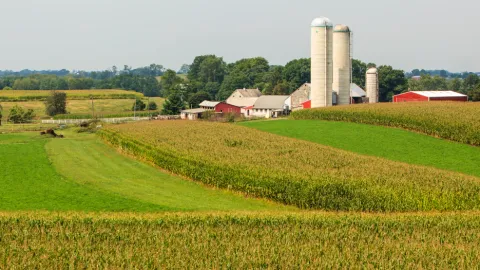
Sustainability is a word we hear a lot today. For a cattle rancher it has a lot of meanings. Just like any business, our ranch must be financially stable. We must make enough to support our families and then hope to have a little left over to reinvest in our business. In agriculture, financial sustainability and environmental sustainability are not mutually exclusive, as is often portrayed by people outside of agriculture. In fact, for a rancher they are essentially the same. Our living is based off the environment, so if the environment is not sustainable, then the business is not sustainable. Any rancher who has remained in business for any amount of time recognizes this relationship.
On our ranch in Southwestern Montana, we mostly manage native grasslands. Our primary management tools are cows, fences and a cowboy. The cows harvest the grass, the fences segregate pastures and the cowboy manages where and how much grass is harvested. Sustainability for these grasslands is a balancing act to harvest the appropriate amount of grass. Harvest too much and cause long-term damage but harvest too little and the quality of the grass is degraded and the risk of fire increases. When grazing is done properly, our cows and calves are happy and healthy, the ecosystem is improved for plant life and wildlife and our environment is sustainable. When our happy and healthy calves come home in the fall, then our livelihood is sustainable
While it is true that ruminant herbivores emit some methane during the digestive process, they play a key role in maintaining healthy grasslands and are an integral part of the natural carbon cycle.
Recently, ungulates (hoofed mammals), mainly bovines, have been a topic of discussion by politicians and billionaire activists in regards to our macro environment and climate change.
I think cattle are an easy target for these people, as many have no exposure to agriculture in their daily lives. It’s much easier to blame the problems of the world on something you don’t interact with daily. I am by no means a climate change denier. In fact, in the fourth grade I did a science fair project on climate change and the greenhouse gas effect (and this was before “An Inconvenient Truth”). Climate scientists and climate reports acknowledge that agriculture is a contributor to greenhouse gas emissions; however, many recognize that agriculture is difficult to analyze and fully understand due to a number of agricultural practices being closely intertwined with natural carbon cycles. In addition, ruminants such as cattle emit methane, not CO2, which has different impacts. These details are often omitted when the topic is discussed. While it is true that ruminant herbivores emit some methane during the digestive process, they play a key role in maintaining healthy grasslands and are an integral part of the natural carbon cycle. Healthy grasslands contribute to a healthy environment and sequester carbon.
In a world where the global population will soon be more than 8 billion, humanity’s impact will become more evident. The conversations should not be about what we can’t do or don’t want to do but about moving forward and finding ways to make our impacts more sustainable. In agriculture, we will need to continue driving innovation to improve sustainability, reduce environmental impacts and continue feeding the world.
JM Peck is a rancher and Farm Bureau member in Montana. This column was originally published on the Montana Farm Bureau blog.